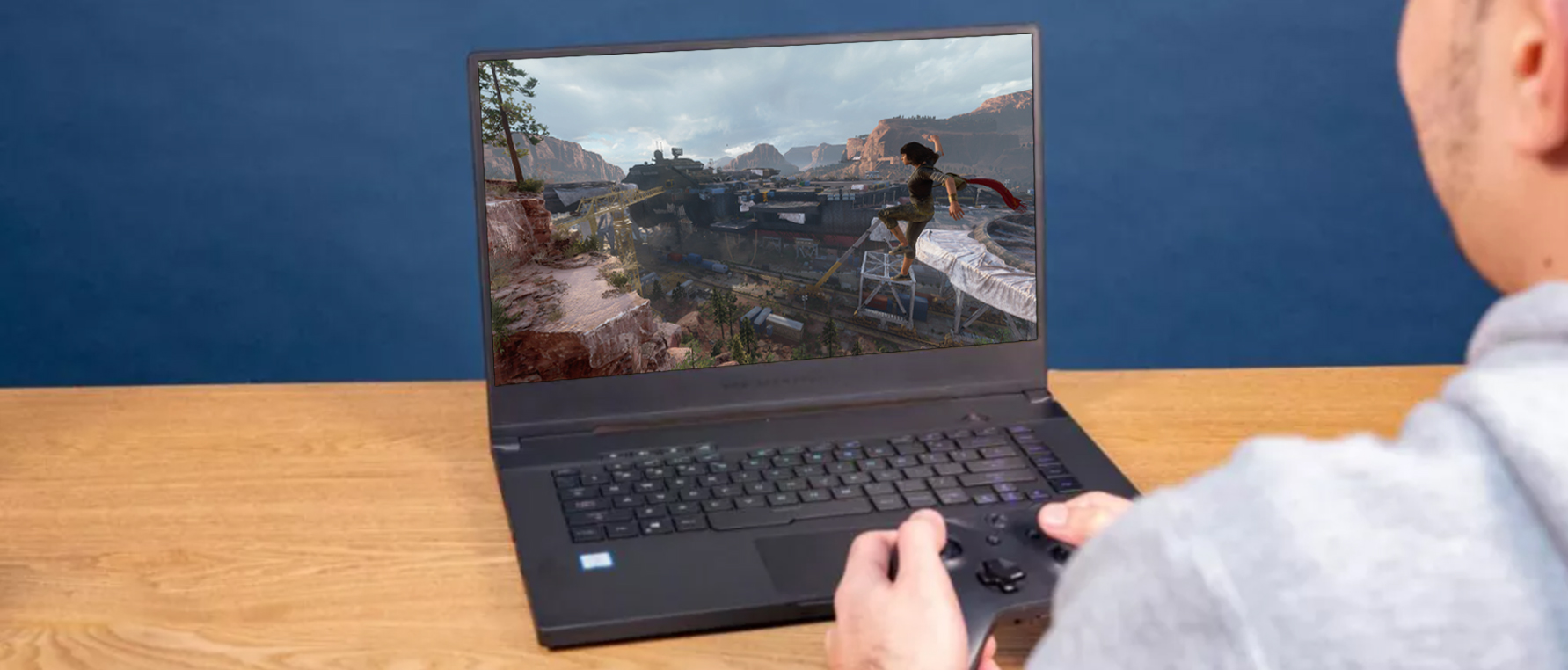Laptop Mag Verdict
Marvel’s Avengers boasts a decent campaign and impressive skill trees, but the positive qualities end there. Otherwise, its mediocre combat system, awful world design and unbearable amount of reused content make it one of the worst AAA games of 2020.
Pros
- +
Impressive skill trees
- +
Decent campaign
Cons
- -
Recycled world design
- -
Mindless gear system
- -
Mediocre combat
- -
Completely lacking a solid structure
- -
Bugs and performance issues
Why you can trust Laptop Mag
Whether you’re a rabid comic book fan or a casual movie-goer, most gamers have enough understanding of the Marvel universe and its lore to get excited when something like an Avengers video game is announced. However, doubts slowly sank in for fans as they learned more and more about the game. Many wanted to experience a cinematic campaign along the lines of the Arkham series and Marvel’s Spider-Man, so when it was revealed to be a live service game akin to Destiny and The Division, the hype plummeted.
However, with every new showcase and piece of news (like how we’ll get to play as Spider-Man, Kate Bishop and Hawkeye post-launch), the anticipation slowly returned. Unfortunately, the skeptics were right all along.
Marvel’s Avengers sucks; there’s no way to sugarcoat it. After getting to the max level and experiencing a large chunk of its endgame, its few redeeming qualities are far outweighed by its negative traits. A mediocre combat system, awful structure and a shocking number of recycled ideas make Marvel’s Avengers one of the worst AAA games of 2020.
Avengers Reassemble
Marvel’s Avengers opens with our heroes hosting an Avengers parade on a helicarrier when things go awry and dozens of masked soldiers invade. As Black Widow, Iron Man, Thor and The Hulk fight for their lives against Taskmaster on the Golden Gate Bridge, Captain America attempts to repair the sabotaged helicarrier. But as all our heroes watch, we see the giant floating aircraft burst into flames, with no word from the beloved Captain. Simultaneously, San Francisco begins collapsing as a mysterious airborne gas covers the city. It’s at this point when the Avengers realize they’ve lost and come to the conclusion that Captain America is dead.
Sometime later, the gas unleashed over San Francisco causes people to suddenly gain superpowers. Many years pass and Advanced Idea Mechanics (AIM) has seized control and promises to put an end to the Inhuman plague. The Avengers have been shunned, now disbanded, and the world has lost its mightiest heroes. Beginning on such a low note is narratively engaging, and as Kamala Khan slowly gets introduced to every Avenger, it feels like the player is a fan meeting their heroes.
Decent campaign
Marvel’s Avengers does have a saving grace: the campaign. It’s short and awkwardly paced, but thanks to incredible performances from Troy Baker (Bruce Banner) and Sandra Saad (Kamala Khan), it occasionally reaches the narrative highs many expect of a story-driven Avengers title.
Crystal Dynamics' decision to make Ms. Marvel the game’s protagonist is easily the most inspiring aspect of the experience. She’s an excellent underdog and some of the best moments involve Kamala Khan interacting with the team.
Sign up to receive The Snapshot, a free special dispatch from Laptop Mag, in your inbox.
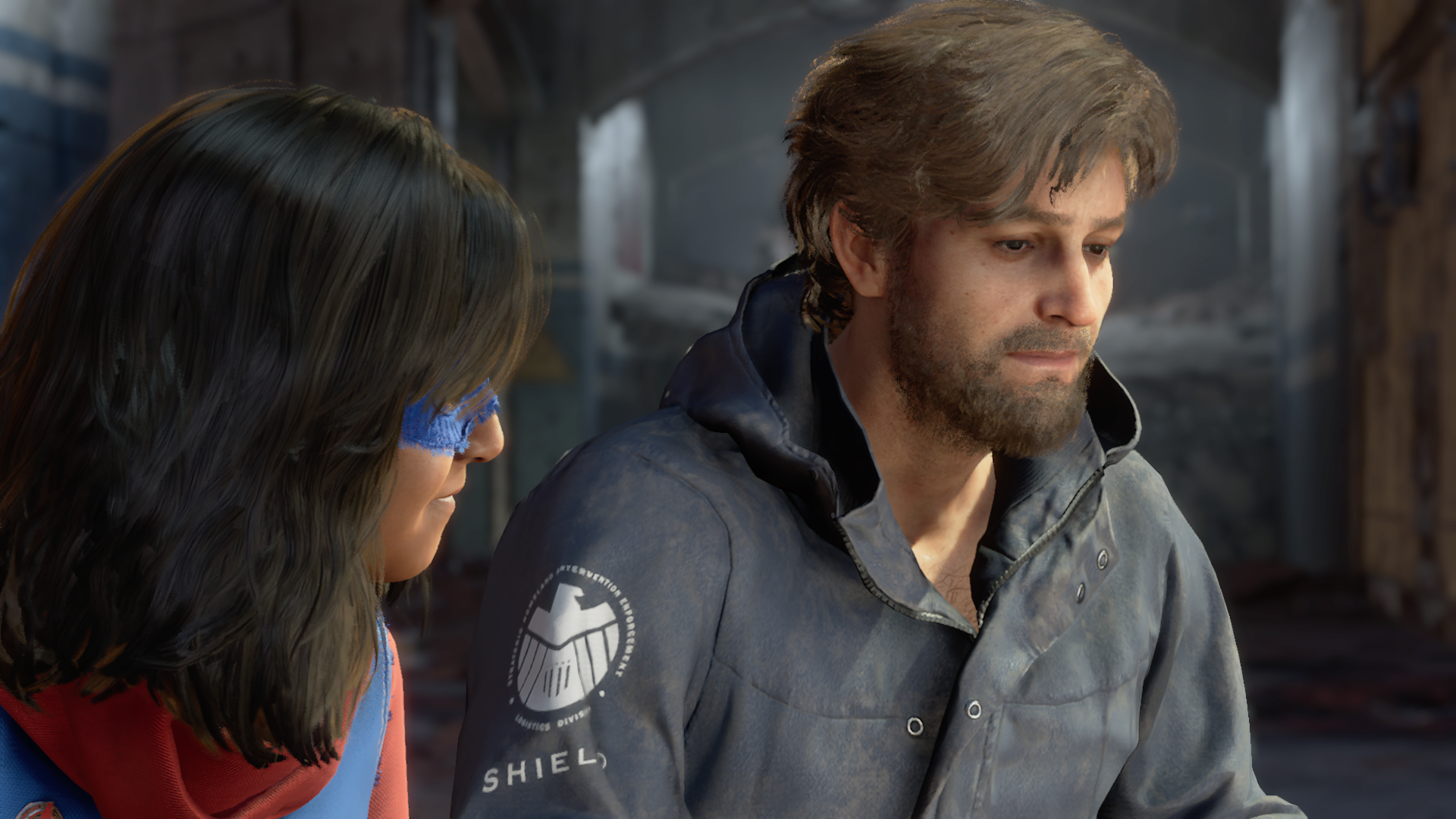
When Kamala begins to question if she wants her powers, and when Bruce struggles to remain calm in the face of stressful situations to keep The Hulk subdued, the player connects with these heroes on a human level.
Unfortunately, the structure of the narrative can be pretty awkward. Certain characters get introduced and are never seen again, while some arcs are treated with no payoff. The most prominent example is when Kamala meets a fire-spewing Inhuman who informs her that his mother is currently kept captive by AIM. Kamala makes a big deal of this to Bruce, and when he refuses to jump in so rushedly, she takes matters into her own hands and infiltrates the prison.
Skip ahead a little later after the prison heist is successful, and we get no resolution to this arc. Players never meet the fire-spewing Inhuman again and we never witness him get reunited with his mother. In fact, his mother is not present within the campaign at any point.
Furthermore, the campaign being only 10 hours long is quite a detriment to the pacing. Because players barely get to see what MODOK and Monica are doing, their transformations feel rushed. We don’t get many cutscenes for them besides their interactions inside of a lab, which makes it hard to appreciate their development.
Additionally, the rocky relationship between Tony Stark and Bruce Banner gets treated without much care, as the resolution comes abruptly. It’s also strange that players are completely unable to replay story missions.
Mediocre combat
Marvel’s Avengers blends mindless, button-mashing, beat 'em up combat with a selection of diverse heroes who can fly, shoot guns and toss their hammer or shield to damage foes. As it focuses on battling enemies, completing quests, leveling up and attaining gear, it’s essentially a “looter brawler.”

The combat isn’t necessarily bad; it does enough to force the player to be thoughtful when engaging with enemies. Certain attacks can only be avoided by pressing the dodge button right before they strike you, and heroes like Iron Man and Ms. Marvel can block and parry.
But many heroes feel unbalanced. Ms. Marvel can heal, revive her teammates from the dead, and revive herself while dead whereas Black Widow cannot recover from damage without health drops and her strongest weapons pale in comparison to the abilities of other heroes. The only crowd control maneuver Black Widow boasts is her ultimate, and in a game that tosses dozens of enemies at you, it's not a reliable counter.
That said, Marvel’s Avengers has decent combat fluidity; it can be quite satisfying when you properly dodge a strong attack or get a handful of enemies into an exciting combo. On the other hand, projectiles can chain attack you over and over without the chance to recover, causing you a swift death and absolutely destroying the flow of battle.
Encounter design
A big issue with the game’s combat comes down to how Crystal Dynamics structured its enemy design to complement the moves available to players. When there are a hundred enemies on the battlefield, the amount of attacks you’ll have to manage at once sometimes means players will be dodging more than fighting. Additionally, Marvel’s Avengers has an overreliance on enemies with strong projectiles and it frequently fails to properly key you in when you’re about to be attacked by one.
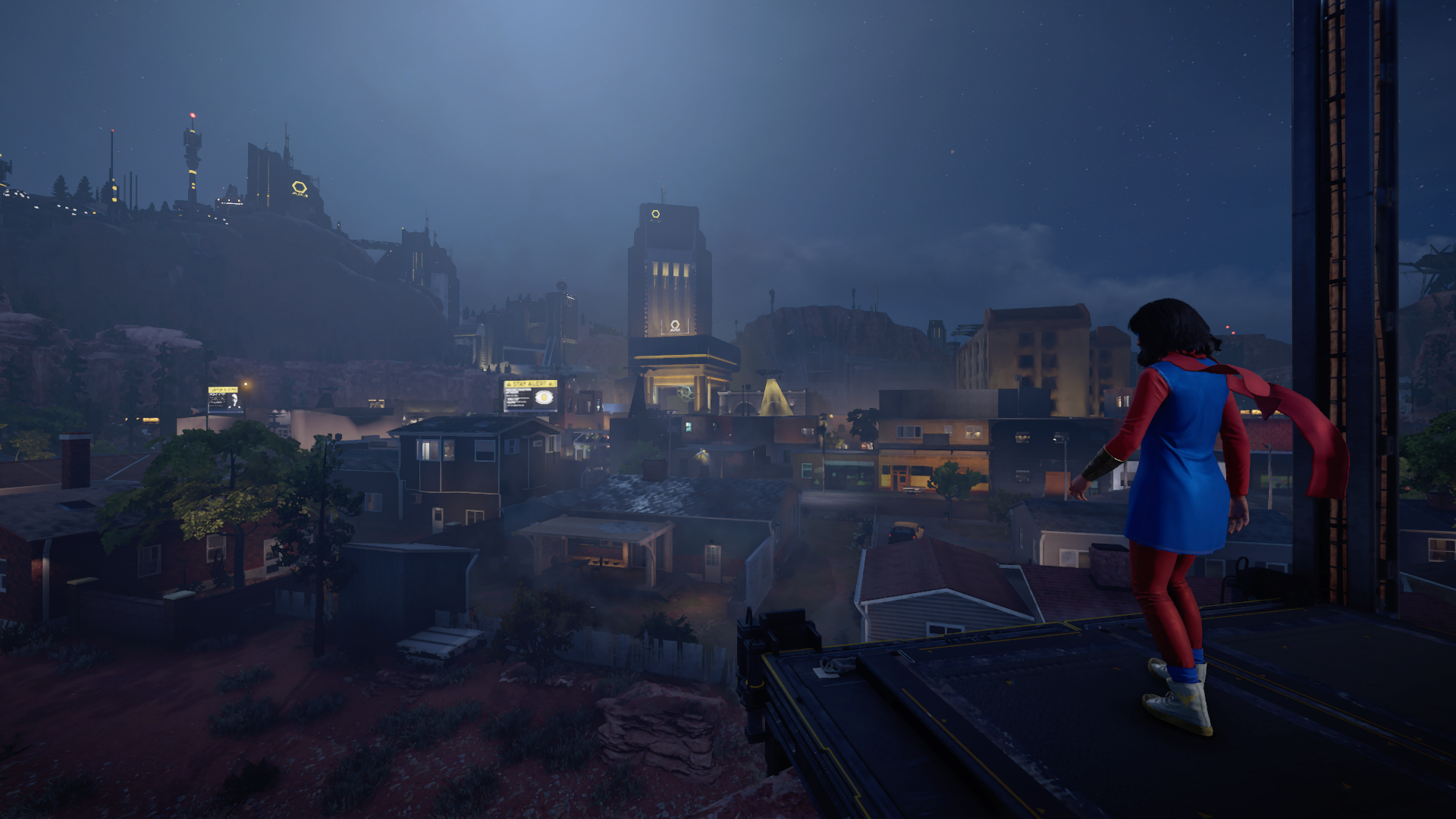
A giant red exclamation mark will appear if an attack is coming off-screen, but if any enemy combatant is even slightly in your field of view, this exclamation mark no longer appears. When faced with a dozen enemies with rockets, it’s difficult to see what’s going on when the frames drop substantially, and an overwhelming amount of particle effects are flashing all over the screen.
Peacekeepers will shoot a projectile at players and teleport across the map, which can be exhausting to deal with. Characters like Black Widow and Iron Man can use fast ranged attacks, which deal with these enemies reliably (it’s still annoying, but at least it’s not overly frustrating), but The Hulk has to pull a giant rock from the ground and toss the slow-moving projectile, a move that is too slow against Peacekeepers.
There’s also an enemy that magically conjures a gigantic shock onto your hero from no discernible direction. An obvious indicator will appear over your hero when this happens, but it always feels like it comes out of nowhere. Some hostiles can even drain the player of their ability meter, making it impossible to use their ultimate or special moves.
The worst offender is when certain foes have an invisible shield present on them, which blocks all incoming damage. The game provides no visible indicator for when this happens; I often punched a bad guy who’s standing there doing nothing before seeing a prompt that informs me my damage was blocked. After putting 30 to 40 hours in Marvel’s Avengers, I still have absolutely no idea what causes this to happen.
There are actual shields in the game, ranging from physical ones to force fields, which players have to destroy before lowering the enemy's health bar. But what I described above is something different altogether. It’s frustrating to have damage reduced to zero for no discernible reason.
Unique movesets
The combat is a mixed bag overall, but Marvel’s Avengers presents an impressive pool of unique modifiers and abilities for each hero, all packed in an expansive skill tree. In its current state, players have access to Ms. Marvel, Black Widow, Iron Man, Thor, The Hulk and Captain America. Crystal Dynamics also revealed that the game will frequently receive post-launch content, including Spider-Man, Kate Bishop and Hawkeye as playable characters.
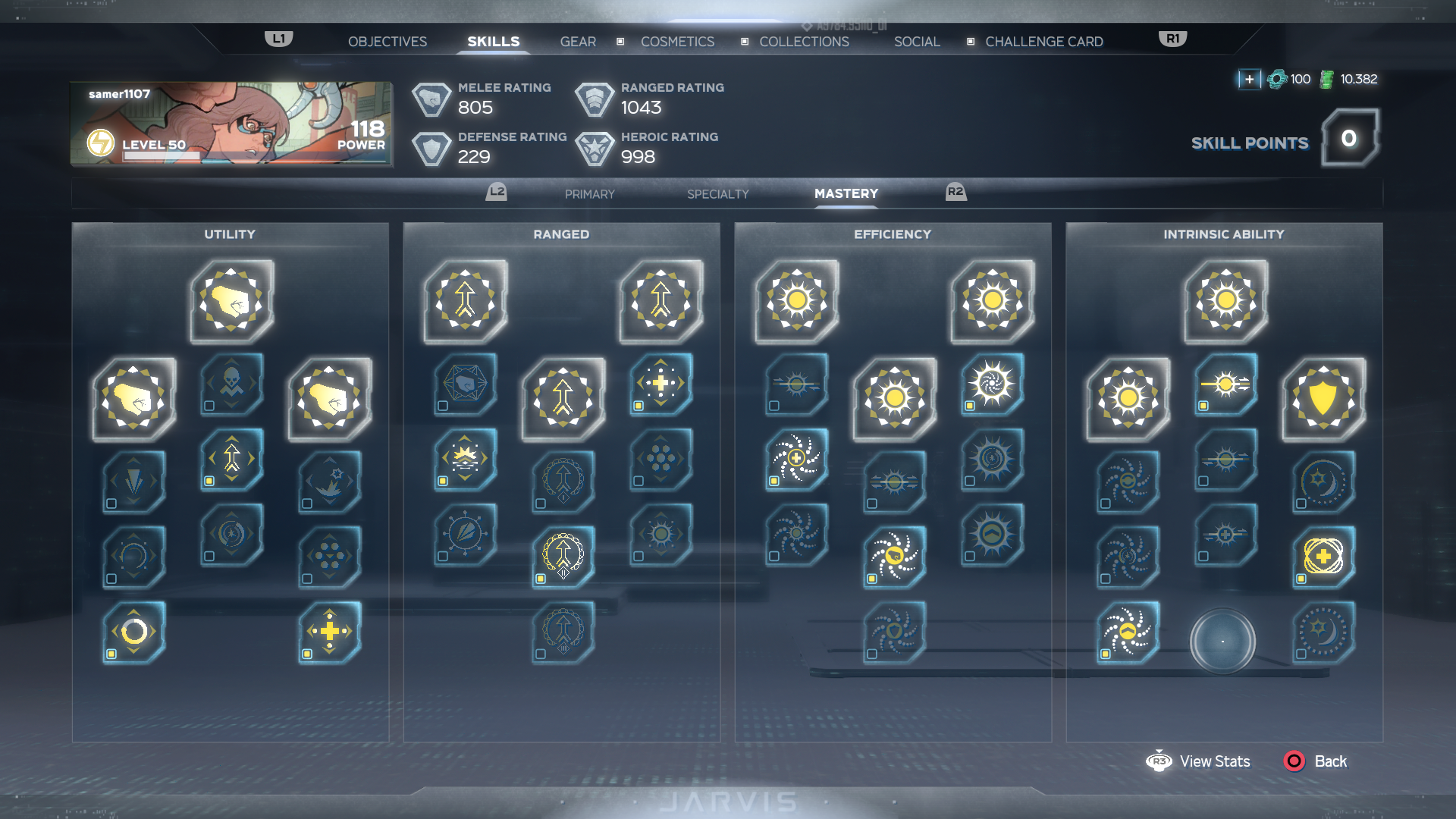
I initially believed launching this game with six heroes would be a bit underwhelming, but after getting my hands on each of them, it’s quite clear that they’re far more than just reskins with the same movesets.
For example, Iron Man can fly, hover, block, parry and cut holes in robots with his devastating lasers; Ms. Marvel, who happens to be my personal favorite, can heal fellow heroes, punch quite far in an incredibly wide cone, greatly grow in size to crush foes, and swing across the map by grappling onto surfaces with her stretchy arms. These varying traits are especially evident within the game’s skill trees, which highlight how much work has been put into each hero.
Marvel’s Avengers boasts three skill trees and every skill is unlockable once the player reaches the max level. The Primary skill tab is full of new abilities, the Speciality tab allows the player to modify those abilities in grand ways, and the Mastery tab presents minor tweaks to the hero that could drastically change the flow of combat.
The potential here is impressive, as players are able to deeply customize their heroes and compliment gear with unique builds.
Gear system and upgrades
Marvel’s Avengers possesses a gear system similar to those seen in games like Destiny and The Division. Players will constantly find all sorts of loot, and rather than consciously make choices about which armor or artifact suits them best, a power level is ascribed to everything you find that states whether it’s better than what you currently have equipped.
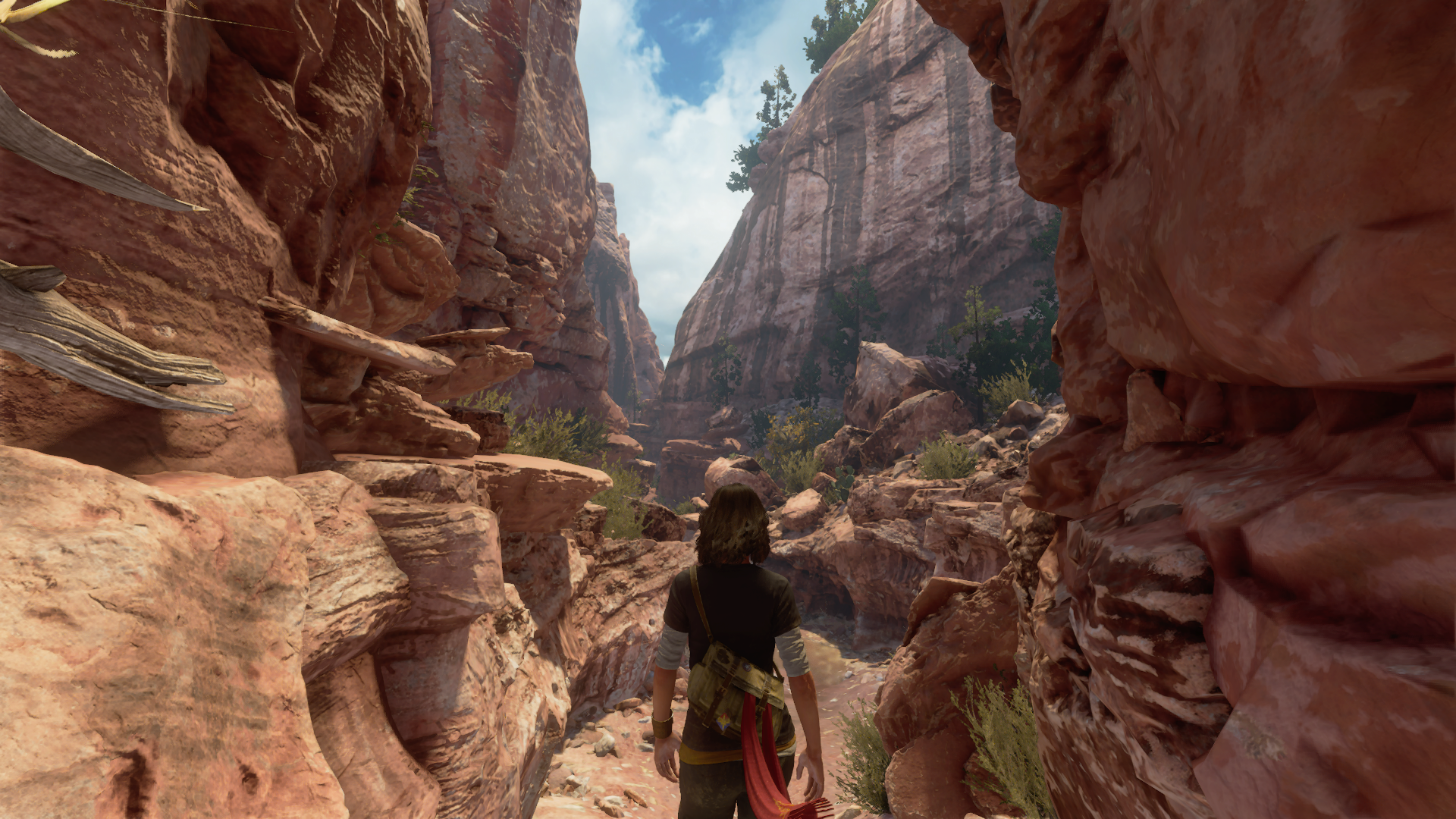
This creates a habit where the player mindlessly scans their inventory, equips the loot with the higher power level, dismantles anything else, and moves on with the game. This might be a relief for those who are indecisive or don’t enjoy spending time considering which piece of armor suits a mission best, but I’ve always found it to be an underwhelming approach to gear systems.
At least with The Division and Destiny, the weapons players found occasionally changed the way they played. But with Marvel’s Avengers, there was never a point where I had to actually think about what I’m equipping or why it’s useful to me. Furthermore, each piece of gear in no way changes how the player looks visually.
This is especially upsetting since the game does have a handful of unique modifiers added to loot, which can increase resistance, change how attacks work, and enhance specific damage types. There’s even a modifier that can shrink enemies. However, players likely won’t start caring about what their armor actually does until they hit the max level, as constantly getting higher power level gear means you never grow an attachment to any single piece of equipment.
Repetitive missions
The repetitiveness of the game’s objectives got old quickly. Many of Avenger’s side missions follow identical patterns, whether it’s to help Jarvis hack into a mainframe by standing within a designated area, defeating waves of enemies, destroying some generators or stopping enemies from hacking into Jarvis. Not only are these mission concepts frequently reused, but they’re not particularly interesting to begin with.

Additionally, there’s an awkward feature wherein completing an objective causes enemies to disappear and the mission to suddenly end. This makes it pretty easy to just run into a level, skip all the enemies and complete the objective to quickly get it over with.
Rather than the game be overwhelmed by these repetitive goals, Crystal Dynamics needs to consider the value of each level as something substantial and varied. Avengers shines best when the party is working together to overcome some phenomenal foe, and that’s not at all highlighted in three-minute-long missions where the objective is to stand in a circle and skip all the enemies.
However, one side objective stood out to me. Players needed to activate five terminals in a certain order around an underground facility while being brutalized by ruthless enemy robots. Hilarity ensued as my squad and I ran around attempting to figure out which console was which within the strict time limit.
Then I learned that this is the same objective for every single Shield vault mission. Not only is the objective identical, but the room in which you complete the objective is the same. Marvel’s Avengers temporarily impressed me with a mission I found fun and then made me redo it so many times that it became exhausting.
Awful structure
Marvel’s Avengers would have benefited greatly from being an open-world game with a tight structure. Instead, players will often travel to a semi-open city, forest or dry plains to eventually descend into an AIM facility and finish their objective there. By revolving the game around similar objectives, it greatly reduces the potential for interactivity within the world.

If players are going to be visiting the same environments a dozen times, Crystal Dynamics should have made these areas traversable without a mission needed. Instead of taking us to the same forest over and over, there could have been a gigantic forest with unique areas, quests and explorable AIM facilities scattered throughout.
And if Marvel’s Avengers won’t change its objective-based structure, it should at least improve the execution. Instead of having a hundred missions that take the player to the same four locations to eventually enter an AIM facility, it could have boasted thirty focused missions each meant to feel drastically different.
These missions could be twenty minutes long each, giving players a chance to visit locations like Asgard, Wakanda and Avengers Tower. None of these locations are currently present in Marvel’s Avengers. Instead, Earth’s Mightiest Heroes are limited to sprinting through forests and lab corridors.
Recycled world design
Marvel’s Avengers possesses an overreliance on repetitive scenery, with more than half of the missions taking place within an AIM facility. These labs are typically presented with little variation, as a handful of the rooms look identical and many assets are reused. It gets quite tedious having to sprint through office corridors in a game based around the most iconic superheroes in the world.
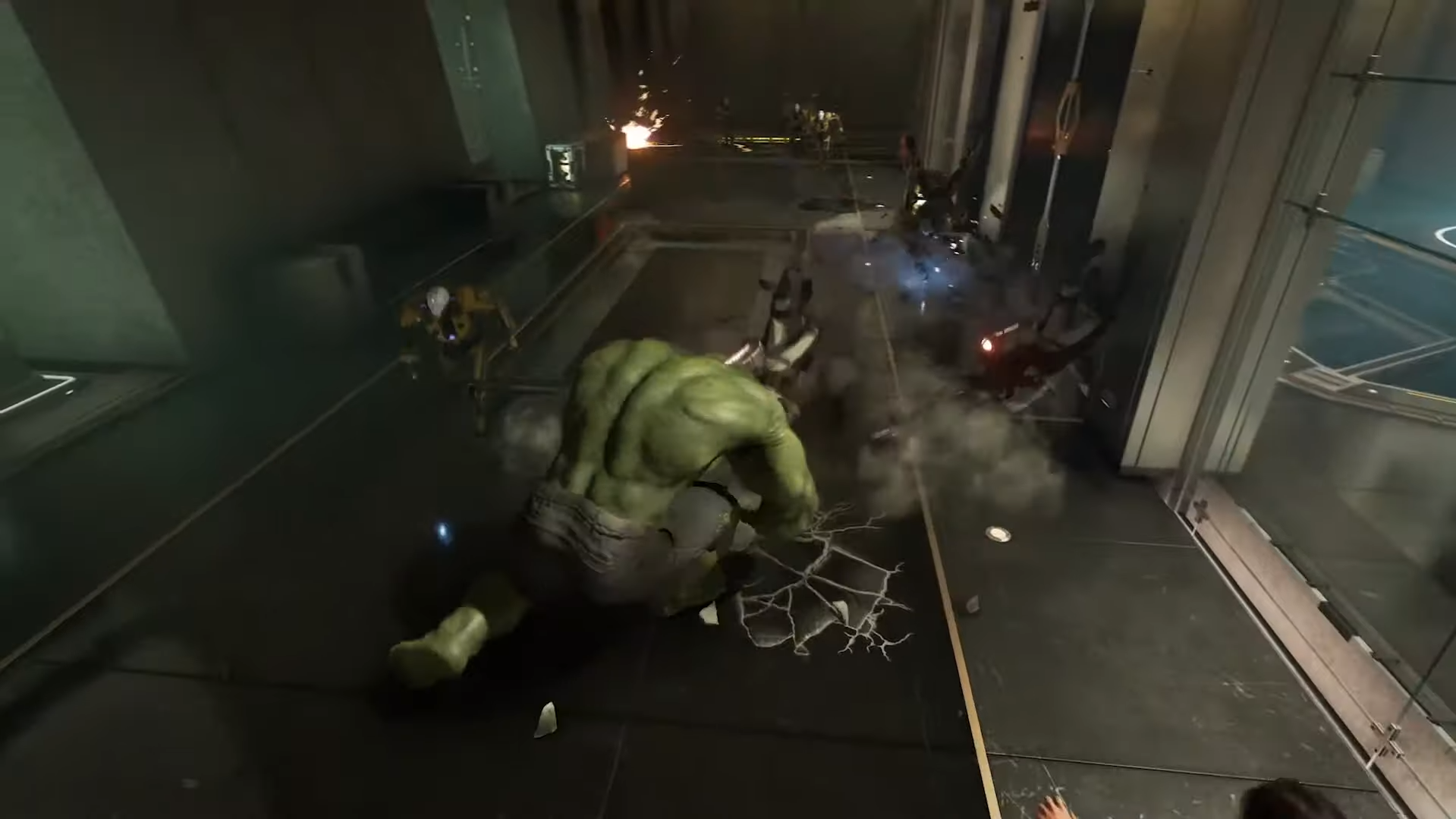
The small differences in design don’t hide the overreliance on reused assets to populate the game’s environments. Trucks, buildings, and other facilities are placed thoughtlessly, making it difficult to connect with the world. Secret chests also feel like they’re thrown around throughout the wilderness, although there are a few fun ones involving puzzles.
Avengers also features HARM room missions, which place the player in a colorless and flat simulation to battle waves of enemies. These are especially disappointing because a simulation chamber should allow developers to mess with iconic environments seen in Marvel comics without having to explain why they’re there.

Crystal Dynamics has an expansive universe with iconic lore at their disposal, yet the experience is consistently lacking in creativity. No one picks up an Avengers game to run through labs and fight robots. I'm especially disappointed since the game’s two biggest competitors, Destiny and The Division, boast stunning art directions and phenomenally detailed worlds.
Conceptually flawed
Avengers executes its world poorly, but even its concepts are fundamentally flawed. When given a universe full of awesome lore to utilize, the game focuses on such a tiny part and loses the scope of that universe.
Crystal Dynamics has severely limited itself by imagining a world where Earth’s Mightiest Superheroes go toe-to-toe with AIM. The enemies you face are almost entirely made up of machines and you primarily battle them across a glorified string of lab facilities.
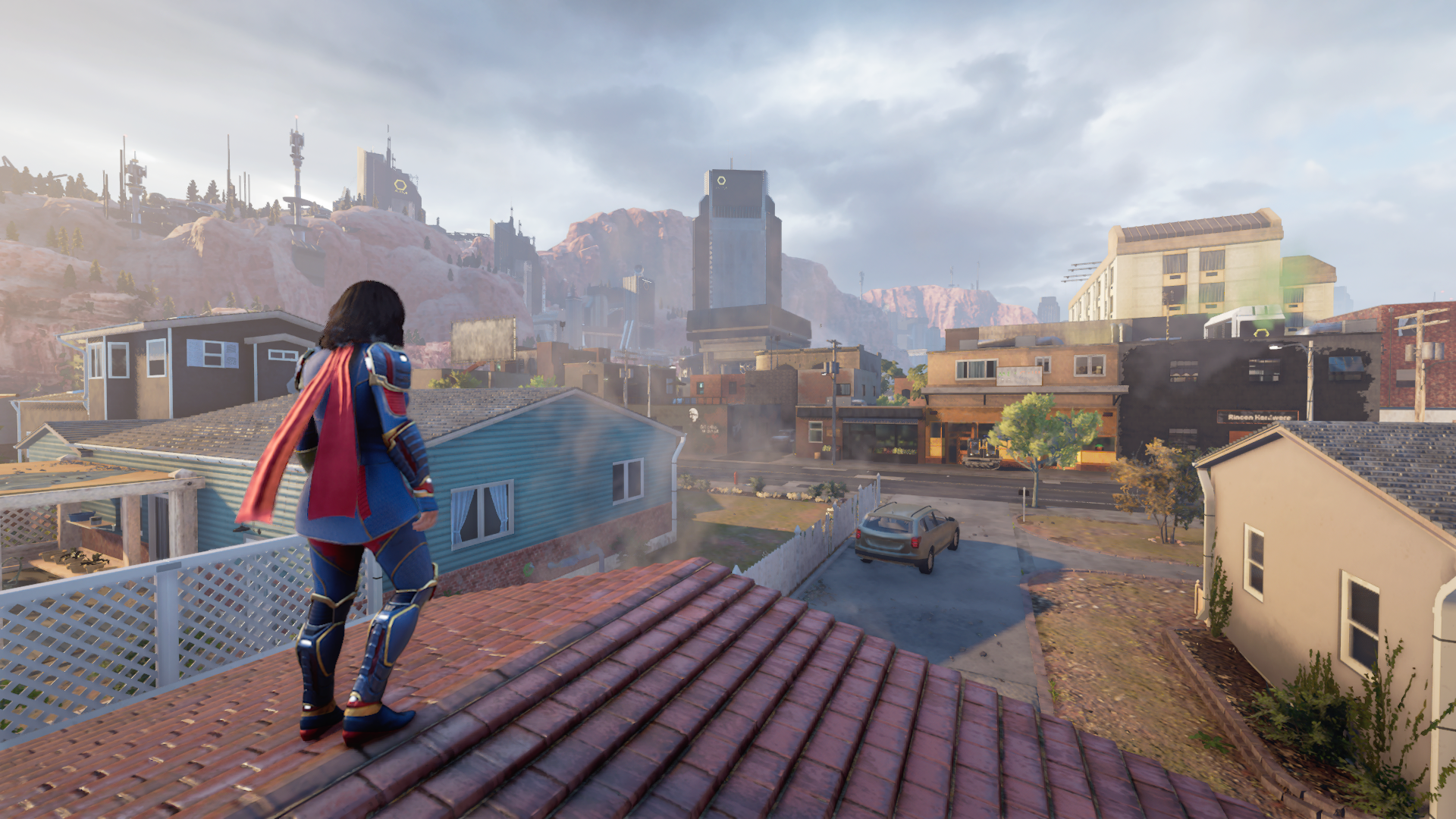
Let me compare Avengers to its competitors: Destiny imagines a universe where the player has to battle enemies across a handful of diverse planets and celestial bodies. We explore the far reaches of our solar system, jumping between the Moon, Venus, Earth, Mars, Titan, Io and more. The size and scope here are undeniable, and sure, Destiny also boasts a couple of robotic races, but the Hive (creepy decaying zombies) and Cabal (beefy armored martians) spice things up.
The Division series involves a world devastated by a virus and drops the player within New York City and Washington DC, allowing them to explore all of the unique corners of these metropolitan areas. The game boasts a few factions, and when you reach endgame (SPOILER ALERT) in The Division 2, a heavily armored group of insurgents with robotic dogs appears.
Marvel’s Avengers begins and ends with fighting robots in an AIM facility. Even during the game's most prominent piece of endgame content (Hives), you descend across five or more floors of labs. The monotony never ends.
Reused content
Marvel’s Avengers has something called a “Villain Sector” which assigns the player a mission with a challenging set of objectives that end in a boss fight. These are daily quests that can be accepted from either a Shield or Inhuman Faction agent within their respective locations.
The issue is that these Villain Sectors cycle through the four available bosses in the game: Abomination, Taskmaster, Warbot and Warship. As these are meant to be frequently replayed, things quickly get stale. I’ve had to refight these bosses at least four times each.
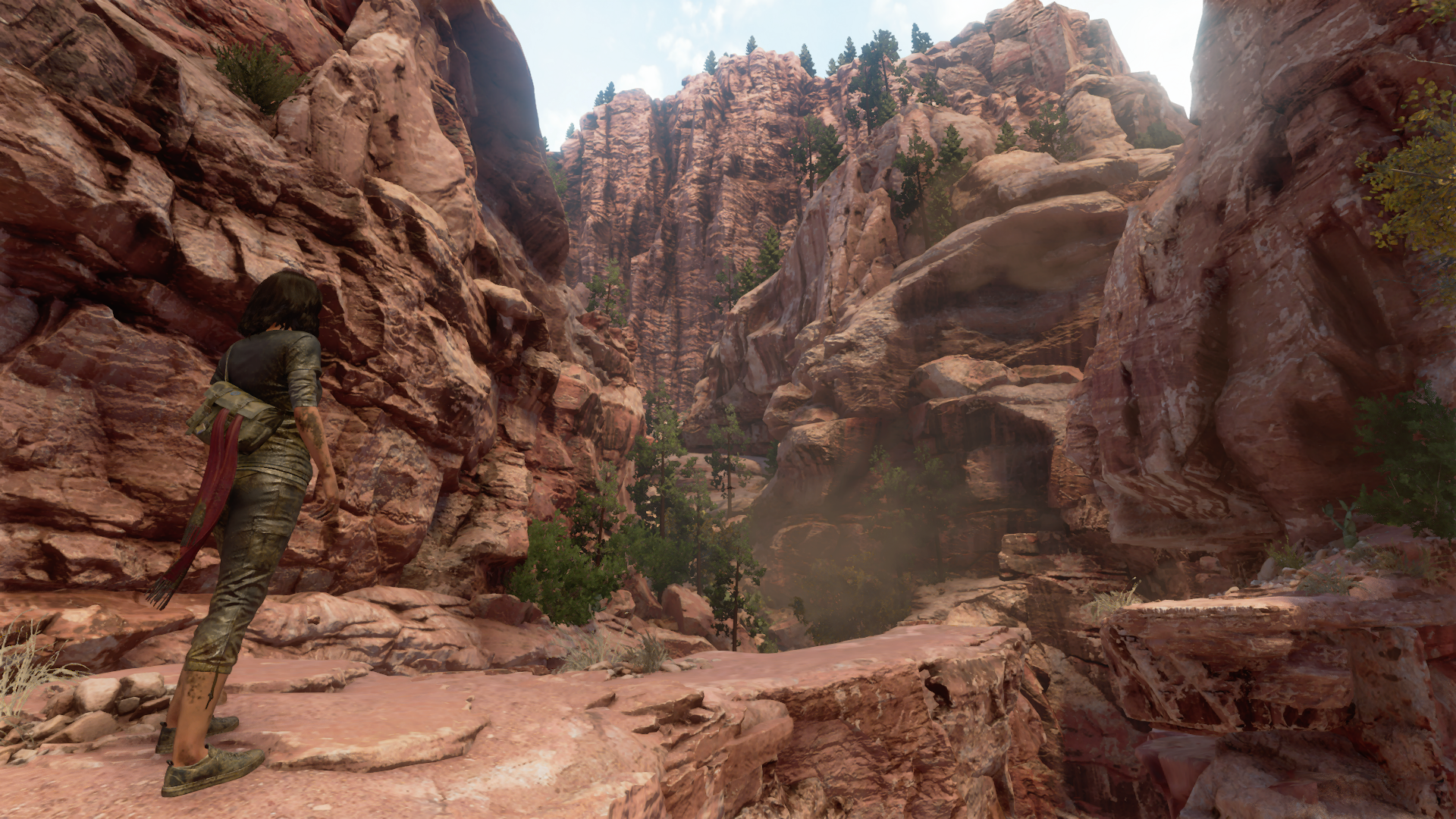
Not surprisingly, these Villain Sectors also take place in recycled areas. I’ve even experienced a day where the Shield and Inhuman Faction agents were giving the same daily quest to battle Warbot within a burning forest. The only difference was the title of the mission.
This is where Marvel’s Avengers stumbles most, as nearly every design choice revolves around making sure the content is reusable. I’ve been inside every part of an AIM facility, every type of forest, and each variation of the metropolitan city a dozen times each.
Marvel’s Avengers: PC performance
Marvel’s Avengers is full of bugs and performance issues. One infamous bug involves an NPC in the Shield and Inhuman Faction hub areas who constantly repeats “Seriously, you’re the best.”
A particularly distracting bug involves an "allies icon" no longer appearing on the screen accurately, making it impossible to determine where they are in relation to you. This is a huge issue as my allies will either be dead and need my help or are trying to inform me about the location of a secret chest. Without the icon, I have no way of finding them easily.
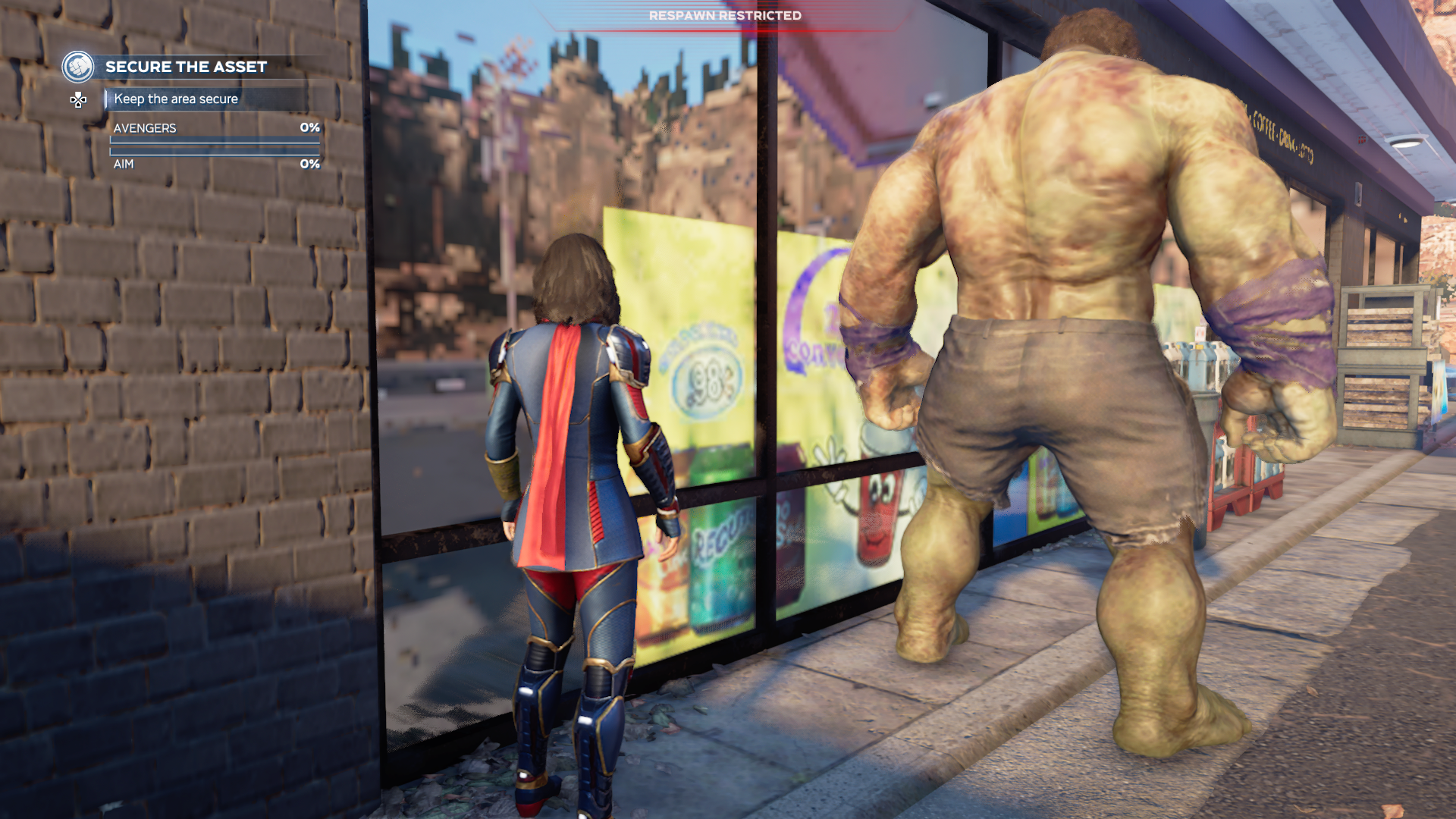
Another bug involved the floor of an AIM facility not fully loading, and as I stepped over it, I began to fall through the world. This didn’t last long; I was swiftly teleported back to the correct position, but it’s still concerning. Cutscenes also don’t play properly at times and character dialogue is occasionally missing.
On both PC and PS4, things can get quite choppy when tons of enemies are running around on-screen. The laser particle effects, shields and enemy attacks not only coalesce into an overwhelming visual experience but it also greatly slows down the console. Frames often dropped during these intense battle sequences. Navigating the menus is also quite obnoxious because each tab takes a few seconds to load. The worst menu is the hero select screen, which takes anywhere between 30 and 60 seconds to launch.
The loading screens are also far too long with a shocking number of issues. Not only can it take up to a minute for the game to load, but some users experience an unending loading screen when they try to launch the game’s campaign.
Marvel’s Avengers PC requirements
I initially tested Marvel’s Avengers on my desktop, which is equipped with an Nvidia GeForce GTX 970 GPU with 4GB of VRAM and an Intel Core i7-6700K CPU. At its calmest, I would get 30 frames per second on the highest graphical settings. I typically reached this framerate when fighting in the HARM room or roaming the helicarrier. In your average battle, I’d drop to around 20 to 25 frames per second, but when many things were present on screen at once, it went down to 15 to 20 fps.
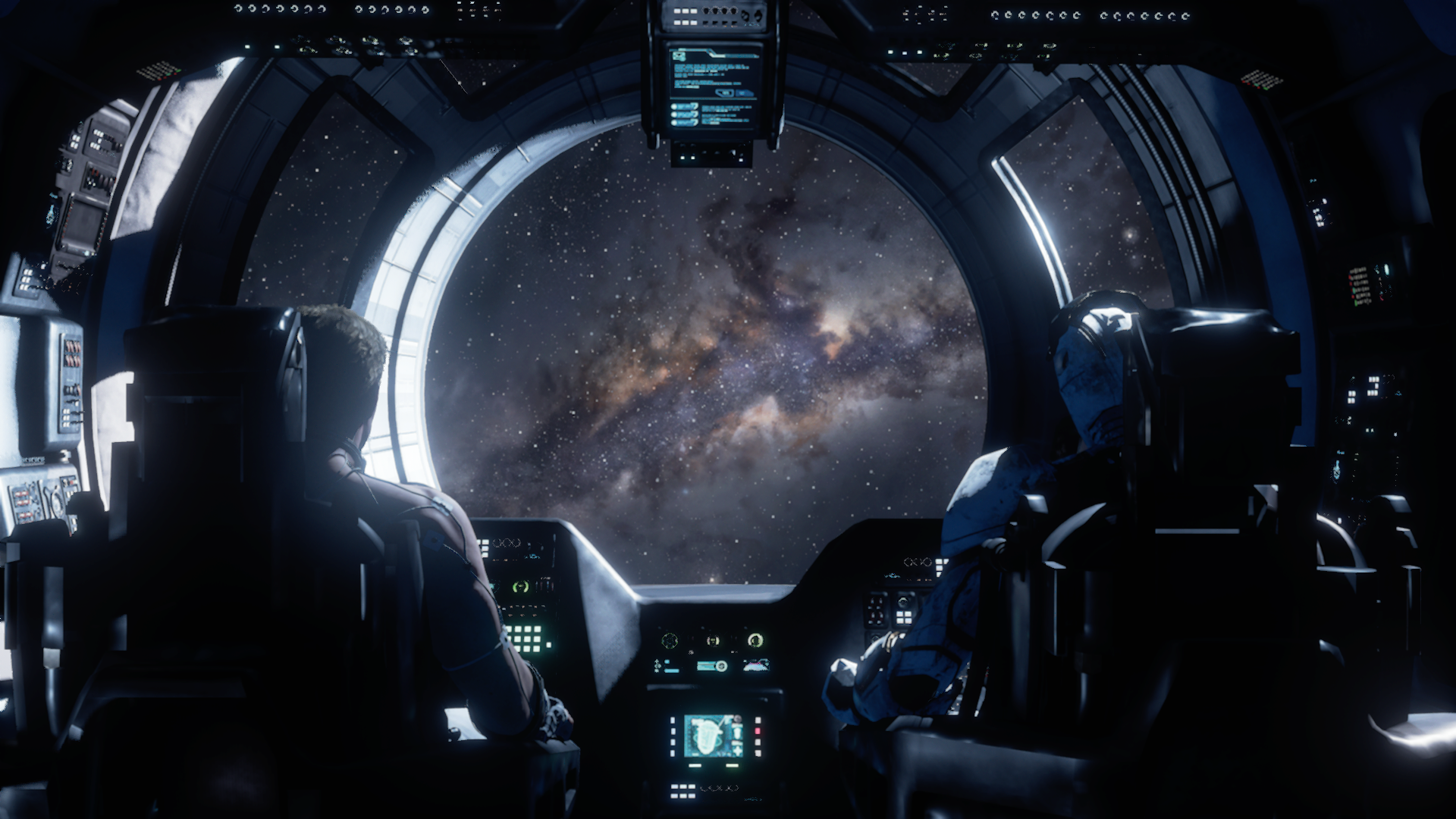
I then tested the game on an Asus ROG Zephyrus M GU502 with an Nvidia GeForce RTX 2070 Max-Q GPU with 8GB of VRAM, an Intel i7-10750H CPU and a 1TB SSD. During casual moments, the game would hover around 55 frames per second. And in a less populated battle, it would stay around 45 frames per second. However, as things got more hectic, it could jump anywhere between 25-45 frames per second.
Marvel’s Avengers has options for dynamic resolution scaling, which can go to 30, 60 or be disabled along with optional support for AMD FidelityFX CAS. Anti-aliasing is also available, with options for SMAA, TAA or off. VSync and HDR capabilities are also available.
In the graphics section, the preset option can be switched between lowest, low, medium, high and very high. These change texture quality, texture filtering, shadow quality, depth of field, level of detail, ambient occlusion, volumetric lighting, screen space reflections, VFX quality, enhanced water simulation, and enhanced destruction. Motion blur, bloom, lens flares, screen effects, tessellation and screen space contact shadows can be turned on or off.
The minimum requirements to run Marvel’s Avengers include Windows 10, an Intel Core i3-4160 or AMD equivalent CPU, 8GB of RAM, an Nvidia GTX 950 or AMD 270 GPU and 75GB of available space.
The recommended requirements to run Marvel’s Avengers includes Windows 10, an Intel Core i7 4770K or AMD Ryzen 5 1600 CPU, 16GB of RAM, an Nvidia GTX 1060 GPU with 6GB of VRAM or AMD Radeon RX 480 GPU with 8GB of VRAM and 110GB of available space.
Bottom line
There’s a nugget of potential within Marvel’s Avengers thanks to the game’s decent campaign and complex skill trees, but it lacks the fundamentals of what makes its concept exciting.
Exploring iconic worlds and battling familiar foes is necessary for Avengers to truly do justice to its source material. Having the Earth’s Mightiest Heroes run around lab corridors and stand on buttons while battling nameless robots undoes what makes the “Avengers” such a compelling franchise.
I hope Crystal Dynamics considers weaning the title from procedural, repetitive and grindy gameplay in future updates. Each mission should feel like a truly momentous obstacle that our heroes need to overcome. We also need more unique worlds, characters and scenarios to make Marvel’s Avengers a memorable experience.

Self-described art critic and unabashedly pretentious, Claire finds joy in impassioned ramblings about her closeness to video games. She has a bachelor’s degree in Journalism & Media Studies from Brooklyn College and five years of experience in entertainment journalism. Claire is a stalwart defender of the importance found in subjectivity and spends most days overwhelmed with excitement for the past, present and future of gaming. When she isn't writing or playing Dark Souls, she can be found eating chicken fettuccine alfredo and watching anime.
